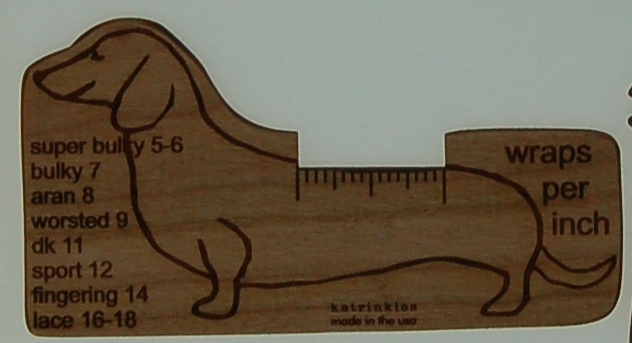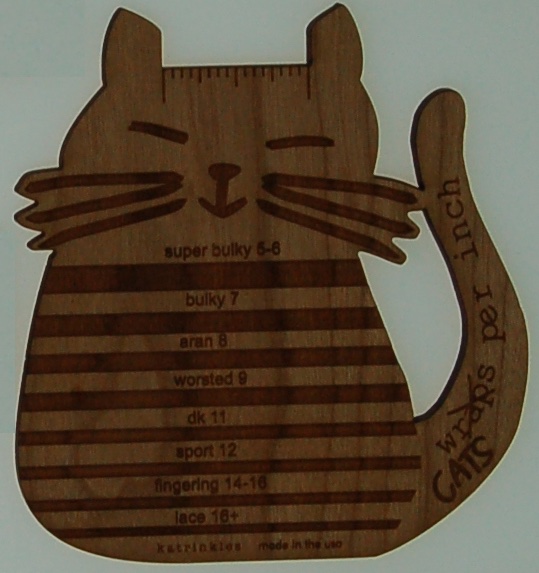I was talking with a colleague in Europe who just could not understand why US knitters and crochetist don’t like to work with lace weight yarn as much as those in Europe. I decided to figure out why this was the case because I personally prefer to hold two or more yarns together when pursuing a design because it creates a much lighter and warmer fabric than a single yarn of similar weight. Here are the five top reasons my US based focus group presented and why they are all myths or truths:
- “It takes too much yarn” – this is a myth! It’s the same or less yarn in terms of the total weight. Yes, there may be more yardage however since the yarns are lighter and held together, the net weight difference is typically in favor of the yarns held together because the simple act of holding thinner yarns together as you work creates a thicker fabric with less fiber than a spun yarn because you cannot possibly twist the fibers yourself as you knit with them as tightly as they are spun by machine. So, next time your pattern calls for worsted weight yarn, try this simple exercise. Make one swatch in worsted weight and one swatch using three lace weights of similar type held together at the same gauge, stitch and of the same size. Block and weigh the finished swatches, see they weigh about the same, likely the three lace weight ones are a little lighter in fact.
- “Lace weight yarn is not for sweater” – this is a myth! There’s no reason why that fabulous alpaca lace weight yarn won’t work up into a wonderful sweater. I frequently make sweaters using lace weight alpaca yarn held at a rate of two to four together because it gives me a much lighter hand fabric and because of all the extra twist, the sweater won’t grow like a sweater knit of a single yarn.
- “Holding two yarns together hurts my fingers” – I guess it could however you might just be holding it too tightly as some of my students were doing in a recent workshop. Loosen up a little, see if just letting it flow through your fingers as a single yarn would rather than trying to twist or compress it as you work.
- “I don’t have the time to bother with holding yarns together” – myth! It doesn’t take any more time to knit a garment with one or six yarns held together if they are knit at the same gauge.
- “There are too many ends to work into the finished garment” – truth BUT keep this in mind – While there are more ends to work in , they can be staggered. So that bulky yarn you want to use but hate to have all those ends to try and hide? Roll your own by holding multiple yarns together and stagger the ends so the individual yarns don’t all end at the same time. Happy to show you how.
With all this in mind, are you ready to do some myth busting on your own and get started on a project using multiple yarns held together? Of course you are. Start small and simple, I suggest with a hat or mitts because both are small projects upon which to practice holding multiple strands together to find your rhythm and preferred way to tension the yarns while creating a useful finished object in relatively short time.
Here’s my cheat sheet for how I figure out the number of yarns I will likely need need of a given weight to produce another when I have two strands I want to use:
- 2 strands of lace weight will make fingering/sock weight
- 2 strands of fingering/sock yarn will make a sport weight to DK
- 2 strands of DK will make worsted or if its really loosely spun it will make aran weight
- 2 strands of worsted weight makes chunky but without the bulk
It gets a little more interesting if you start to mix more than one yarn with another, for instance to make my own marled yarn here’s my formula:
- 3 strands of lace weight make a sport weight yarn
- 4 strands of lace weight make DK weight
- 2 strands of fingering/sock yarn will make a sport weight to DK
- 4 strands of fingering/sock weight yarn will make aran
The secret is to hit the wraps per inch of the desired weight yarn, the actual weight of the yarn is not as important as the wraps per inch. Here’s the standards as provided by the Craft Yarn Council:
| CYC weight (I put in my weights here to help) | WPI |
|---|---|
| 0 Lace (cobweb, lace, thread and other yarns I hate knitting with) | 30-40+ |
| 1 Super Fine (lace) | 14-30 |
| 2 Fine (fingering/sock weight) | 12-18 |
| 3 Light (DK/Sport) | 11-15 |
| 4 Medium (worsted and aran when I can find it) | 9-12 |
| 5 Bulky (for a quick knit because I forgot who was coming for the holidays) | 6-9 |
| 6 Super Bulky (at the edge of my comfort zone) | 5-6 |
| 7 Jumbo (no comment, I hate this stuff) | 1-4 |
So, if you want to target 10 wraps per inch using lace weight yarn, you’ll want to start with three lace weight held together and see where that takes your swatching because to get that lace weight of 30 wraps per inch to present as 10 wraps per inch you’d need 3 strands, here’s the math 30/10=3. It will more likely be four based on my experiences with lace weight yarns but we are all on our own crafting journey so your mileage, or yardage will vary.
Want to experiment with different weights? Go for it! Here’s my favorite tool to use when I am playing around with yarn weights, it’s less technical than the math and certainly cuter to have on my desk than a calculator. All I do is hold the yarns together and wrap them around the convenient little gauge in the middle of the dog’s back to get the approximate yarn weight I need then I start swatching.

Not a “dog person”, that’s ok, there’s a Cats per Inch tool too!

The good news – you can finally use up all that lace weight yarn you bought and regret buying because you hate lace as much or more than I hate it. The bad news – you’ll have to do a little math and some swatching to hit gauge unless you’re making your up-teeth shawl and don’t care about gauge in which case, knit with reckless abandon and see where the plies take you!
Let me know if you want more information on this topic.


Comments are closed